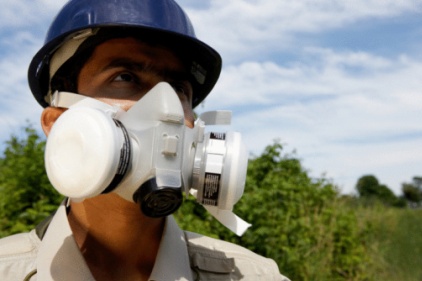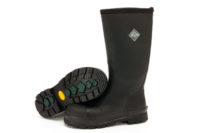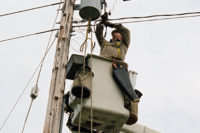Respirator options for emergency situations

| The three most common types of industrial hazards |
OSHA designates that personnel working with any hazardous process should be protected by at least three lines of defense. (OSHA 29 CFR 1910.110 Appendix C {Compliance Guidelines and Recommendations for Process Safety Management})
To provide an effective hazard control plan, these lines of defense must operate in unison.
The three elements of hazardous material risk management are:
1. Containment: Standard Operating Procedures (SOPs) and engineering controls designed to control all hazardous substances.
2. Back-up controls: Control or mitigate exposure to workers and the environment in the event that the first line of defense is compromised or fails.
3. Emergency response plan: Protect plant and human assets by providing a means of escape/response in the event that numbers 1 and 2 fail.
When these three elements work together in unison, the likelihood of a disaster or fatality decreases dramatically. Because an escape respirator will not prevent an emergency situation from occurring, they are sometimes seen as redundant.
Analyze the hazards
A strong emergency response plan begins with a Process Hazard Analysis (PHA), which identifies the risks in the workplace and the consequences that will result if your SOPs and fail-safes malfunction.
The three most common types of industrial hazards that present a high risk to the human respiratory system are:
Risk of fire – Most fire-related deaths are due to carbon monoxide poisoning, not burns.
Release of toxins – This includes the release of a chemical, vapor or gas from a process or vessel at high concentrations.
Environmental volatility – This describes an atmosphere that is likely to change or become dangerous. Here, toxins can accumulate or an oxygen deficiency can occur, causing asphyxiation.
How severe is the situation?
The next step is to understand the degree of severity that would accompany an emergency situation (classified according to the definitions of high, specific and low established by NIOSH in its document Concept for CBRN Air-Purifying Escape Respirator Standard).
High – Any scenario involving a release or existence of unknown toxic substances in high or unknown concentrations, as well as oxygen-deficient atmospheres (less than 19.5 Vol. %).
Specific – Any scenario involving the release or existence of known toxic substances in any concentration. (Environments with ‘specific’ hazards always have sufficient oxygen.)
Low – Any scenario involving the release or existence of known toxic substances in low concentrations. (Environments with ‘low’ hazards always have sufficient oxygen.)
Finding the right respirator
Identification of the correct escape respirator for the application is a two-step process: First, narrow down the options to the escape respirators that will provide effective protection. Second, consider the pros and cons of different respirator types to identify the best option. There are a number of widely accepted escape respirator technologies on the market, including:
- Air Purifying Respirators (APR) – including Escape Mouth-bits, Full Face Gas Masks, APR Escape Hoods
- Self-contained Emergency Escape Breathing Apparatus (EEBA)
- Pressure demand Supplied Air Respirator (SAR) with escape cylinder
- Self-Contained Breathing Apparatus (SCBA)
Many of these respirators can be used in multiple applications and each type of respirator has specific pros and cons.
Training is the easiest way to make an Emergency Preparedness Program effective. Anyone who could potentially need to use an escape respirator should be regularly and frequently trained on how to don the device quickly.
It is also essential to train personnel about the reasons why the escape respirator is necessary in the first place. A healthy respect for the consequences of exposure to a hazard will increase the likelihood that workers will actually use an escape respirator in an emergency.
Taking the necessary steps to identify, implement and properly use emergency respiration equipment will create a line of defense that will help protect your workers and ultimately your organization’s assets.
Resources
• CDC article on CO related deaths: http://www.cdc.gov/mmwr/preview/mmwrhtml/mm5650a1.htm
• Editorial on deaths related to smoke inhalation poisoning: http://www.firesmoke.org/2011/06/01/resolution-to-reduce-smoke-inhalation-deaths/
http://www.firesmoke.org/2011/01/06/2010-smoke-inhalation-stats/
• OSHA 1910.119 App. C
• OSHA 1910.38
• NIOSH_CDC document: Concept for CBRN Air Purifying Escape Respirator Standard, Cautions and limitations of Escape respirators
Looking for a reprint of this article?
From high-res PDFs to custom plaques, order your copy today!





